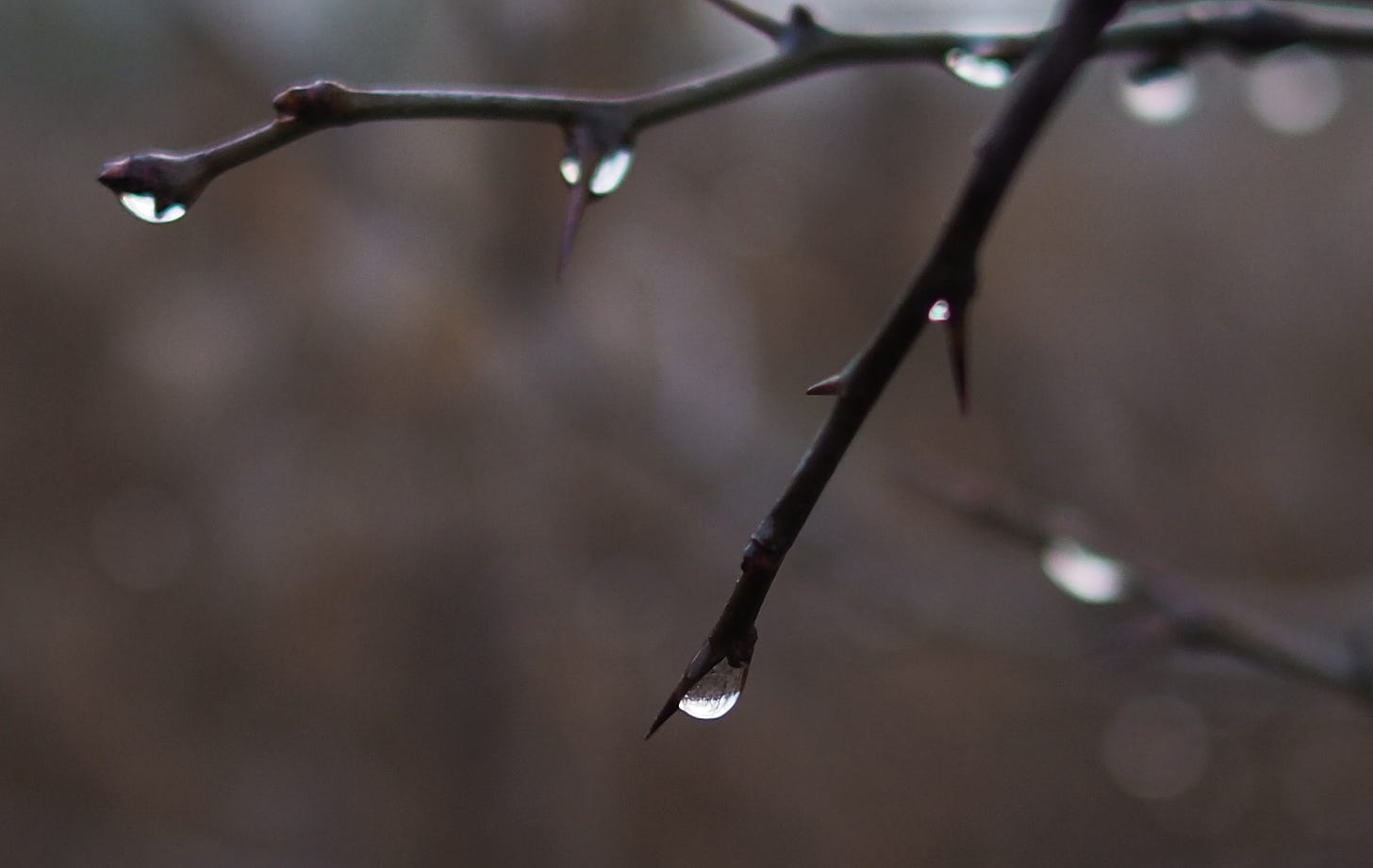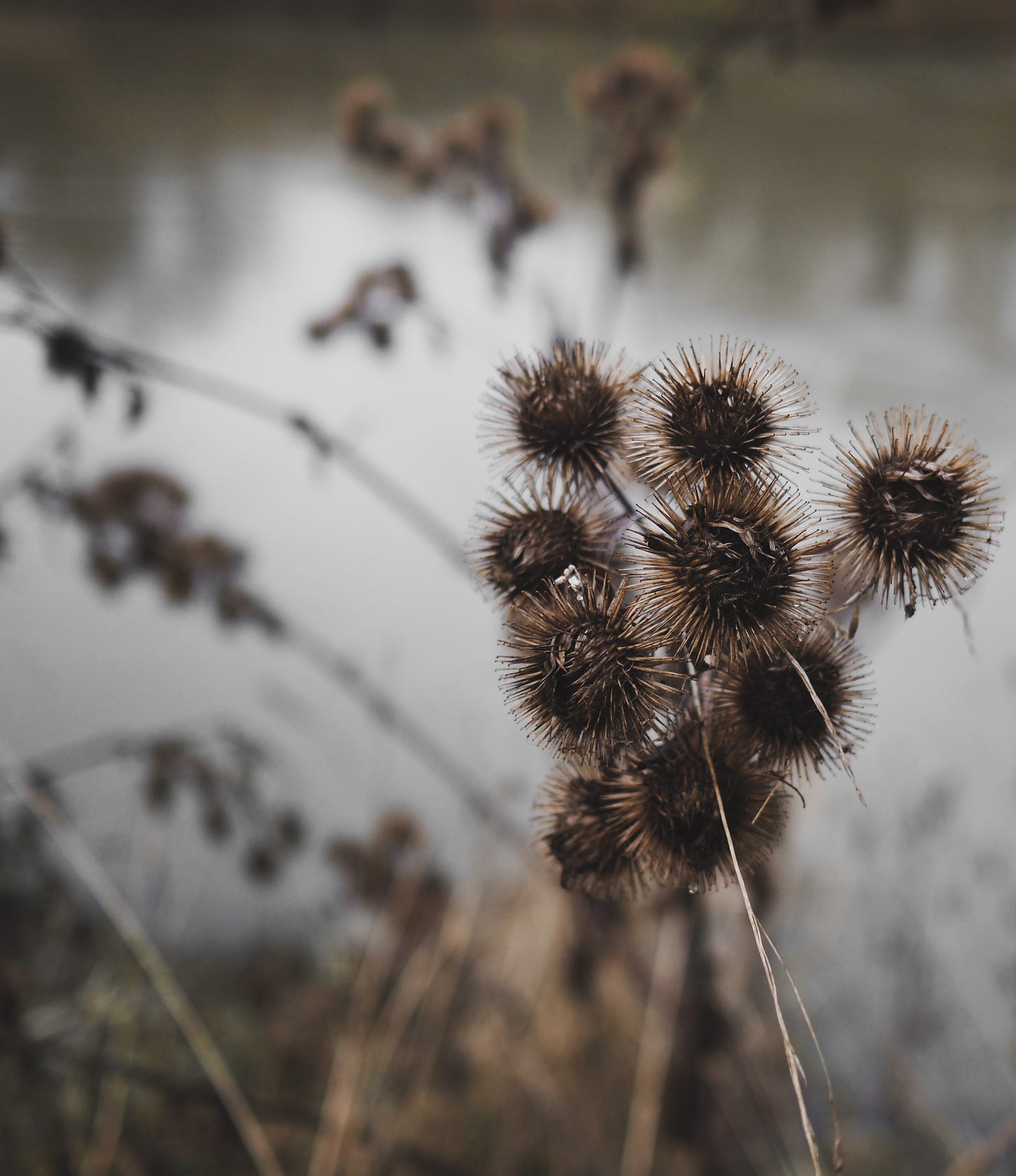It was about to rain and I still had another couple of miles to walk before I reached the barn. The footpath next to the field was claggy, and made every footstep unsteady. I’d forgotten my waterproof jacket, so I was very aware that at any point I might end up traipsing back with a sodden, wool jumper and a month-long cough.
Despite my lack of appropriate outdoor clothing, I felt invigorated by the wind whipping through to my skin and the threat of a downpour. Winter Absolute had me firmly in its chilly embrace and I was enjoying it. For the first time in ages, I was fully in the moment. For this I have the elements to thank.
Winter is a time when I love being outdoors. The predictability of the damp and cold is reassuringly routine (absence of coat notwithstanding). When I’m not hibernating at home, I love going for a wander and exploring the stark surroundings. Familiar places can take on a different visual identity in winter, and look like an entirely new location. For my hermit ways, an added bonus is that often there’s hardly anyone about; bliss!
I didn’t always feel like this about winter. But I learned to like it, then very slowly I learned to love it. There’s more about that here:
There’s something a bit otherworldly about rambling amongst the trees in winter. They look as if they’ve come straight out of a Grimm’s Fairytale: ever so slightly sinister, but exquisitely beautiful in their own uncommon way. Stripped back to their bones, they reveal uneven shapes and asymmetrical lines criss-crossing upwards and outwards. It’s these now exposed signs of decay, coarse textures and crumbling surfaces that interest me. The imperfect has character.
The lush and colourful landscapes of spring and summer are reliably pretty in a conventional way. Whereas the colder months can’t rely on bold hues; they have all but have disappeared, leaving near monochrome tones. Muted greens of lichen are only barely visible through the spindles of brown twigs. Low lying charcoal clouds blanket the landscape. But although the colours are less vivid, this natural desaturation lends itself to another sort of visual language: dramatic forms, intricate silhouettes and a depth of grainy light. Moreover, other senses come to the fore in these gloomy weeks.
In January, the leaves feel like crumpled paper and hedgerows look like tangled twine. The smell is earthy and mossy. Without the dense leaf cover, noises echo through the woods. Every rustle and bird call is amplified. Looking up, the bare branches resemble a network of blood vessels. Seedheads that feel like brushes poke out from thickets. Some I collect purposely, some stick to my woollens and come home with me unintentionally. The sound of the crows cawing keeps me company as I amble on.
I find comfort in winter’s sparse scenery; an inward steadfastness knowing that the process of deterioration leads to regrowth. Ruin and regeneration, the wheel of the year turns and the cycle starts again.
I made it back to the barn, and put the kettle on. I hadn’t got as wet as I feared I might; but nonetheless the feel of a dry, radiator-warmed jumper was just the right sort of cosy required on a January afternoon.














